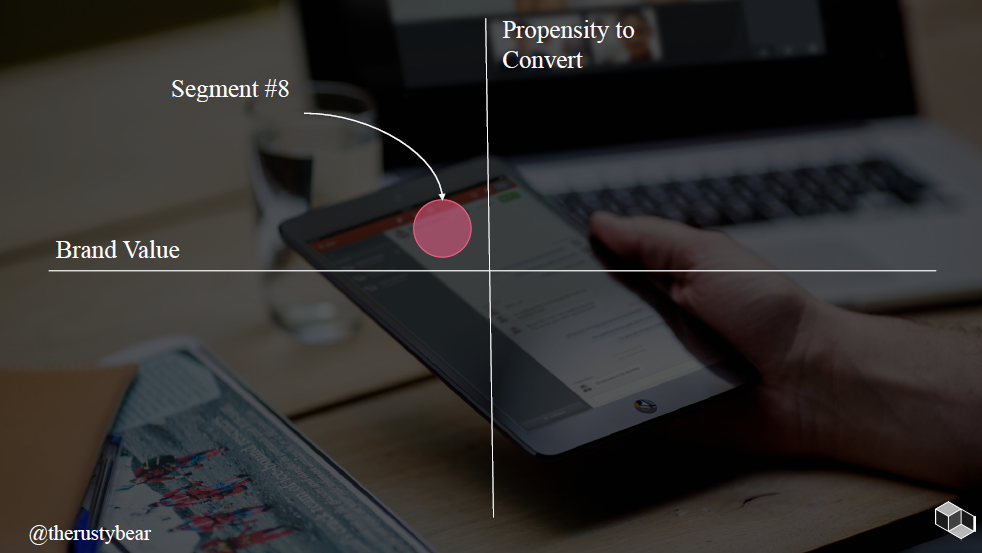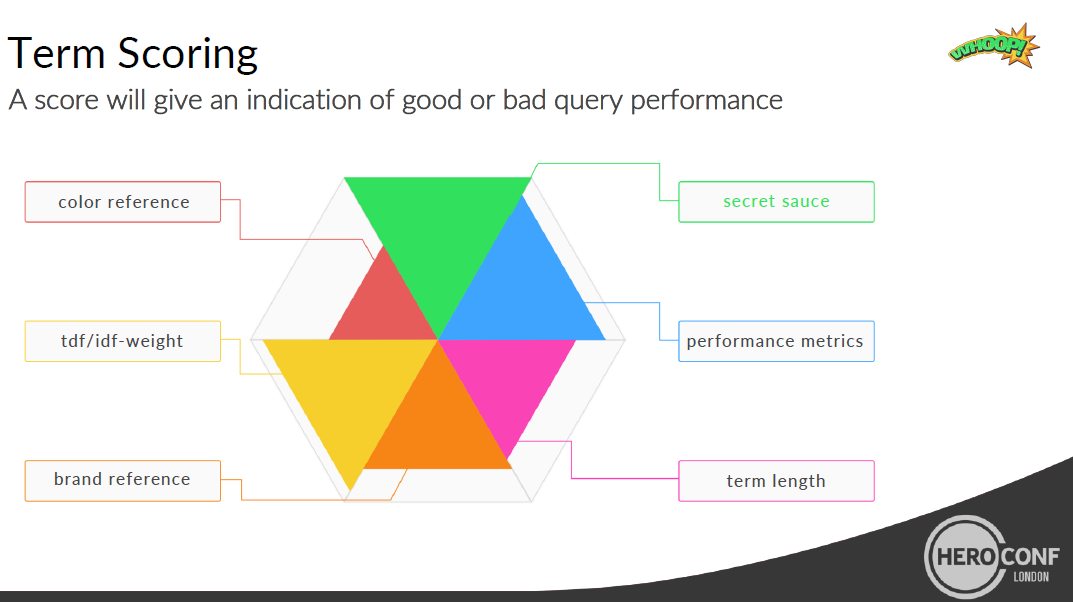By Kenia Gonzalez on 29 Nov 2016
By Kenia & Zoran

Over the years, Hero Conf has established itself as one of the most advanced PPC conferences around the world. Every year attendees come back to their offices bursting with unbridled enthusiasm, as well as ideas on how to implement something cool and effective. Suffice to say, our expectations were high.
Unsurprisingly, Hero Conf London went above and beyond and delivered one of the best conferences of the year. The line-up was stacked from top to bottom and attendees had a tough choice deciding who to see. Throughout the conference, there were always four sessions happening at the same time. This made our decisions even harder as we surely missed some excellent talks. The content itself was very good, mostly fluff-free and to the point. Speakers assumed the crowd had a high level of proficiency and got straight to the geeky stuff.
It’s great to be able to say that we took something away from almost every talk. And while you’d think that listening to presentations on highly-advanced topics would make you feel tired, even a bit a hangry, you’d be wrong. Snack breaks were provided after every session, which gave us plenty of time to keep hunger pangs at bay and network with some the industry’s leading experts.
Now, enough of the chit-chat, let’s get down to the good stuff.
Conversion is a Lie by Russell McAthy

Russell, in his Tarantino-esque performance, dropped a big truth bomb. Conversion rates, which we all look at to assess channel and segment performance, are oversimplified and have very little meaning. Apparently just calculating conversion rates as a ratio between the number of visits and conversions doesn’t even come close to showing us the full picture. Therefore, he recommends looking at the consumer conversion rate, which is the ratio of how many customers visited vs. how many of them converted. This conversion rate is the best representation of consumer behaviour.
Understanding the above is only the first part of the problem and you still need to decide what to do with each customer. Russell recommends calculating the customer’s propensity to convert, which takes into account the probability of customer conversion and the time between now and the time of conversion. This figure now becomes your new KPI and will help you devise the next best action for the consumer – what next action would increase my customers’ propensity to convert?
Russell says this is the future of customer acquisition. Attribution is such a tough nut to crack in our multi-channel, multi-device and ROPO world. Even though we have yet to see a reliable and comprehensive attribution system, Russell is certainly on the right track.
By pushing current technology to the limit, we can develop an attribution system that’s, most importantly, actionable and goes beyond the most widely used models. All of this makes us excited for the future and we can’t wait to see where smart people like Russell can take us.
Become a Google Shopping Ninja by Christian Scharmüller

From the outset, Christian stated that while Google Shopping doesn’t seem very complicated, it’s actually a very complex tool once you take a closer look. To become a real Google Shopping ninja you need to have a good account structure, precise bidding features and advanced analytical capabilities.
A good account will have bidding set on the SKU level and have all the different bid modifiers addressed. This sometimes means it’s hard to maintain due to the number of products. In this case, you can group products into clusters, but only do that to the level if you really need to. This is a trade-off between workload and performance.
And then he got to the fancy stuff – query sculpting. This means addressing shopping queries with the right bids by using several campaigns, campaign priorities and negative keywords in order to increase performance. Christian recommended implicit query sculpting, which means that search terms are sorted into one of three campaigns: high, medium and low priority. Their position is based on the score calculated for every search term and takes performance, brand reference, colour reference, SKU reference and word count into consideration. By following the above steps, you can get that ultimate bidding efficiency.
Finally, he showed us how to use custom labels for testing and not just for the account structure. These custom labels can be used to test performance based on inventory levels, price changes and shipping times, etc. The fact that custom labels are recorded at the time of impression makes this possible.
All in all, this was an excellent talk that bagged Christian an award for the conferences’ Most Innovative Talk. We were mostly excited about the concept of query sculpting which is an all-compassing bidding system, but we’re afraid workload will be a big obstacle for clients with a lot of inventory.
It’s going to be difficult to build query scoring for any big client without the use of the tools that are out there. However, we appreciate him sharing their advanced techniques and we’ll certainly implement them.
Inside the AdWords Black Box with an Ex-Googler By Frederick Vallaeys
We had the chance to attend to a superb talk delivered by Frederick Vallaeys – one of the first Googlers ever! Fred covered several topics in his presentation but the ones that we enjoyed the most were ‘How to Write the Perfect Expanded Text Ad’ and ‘How Search Queries are About to Change in 2017.’
Here are the key points from this talk:
How to Write the Perfect Expanded Text Ad?
- Use just one path.
- Use your keywords in the description.
- Use all the characters in the description.
- Use a short first headline, don’t be afraid of not using all the characters.
- Your second headline can be longer than the first.
- Take insights from your current best performing ads and apply the learnings to your new ETAs.
- A/B testing is as crucial as always.
What to Expect from AdWords in 2017?
One of the main focal points throughout the talk was to anticipate the impact of Artificial Intelligence and the rise of a more human way of searching. Tools like Alexa, Amazon’s controlled Echo speaker, are about to change the way you search online forever. Soon, you won’t be typing, ‘Dublin weather’ to see if you need to bring your wellies to work but instead saying, ‘Alexa, do I need my wellies?’ If you are working in PPC, it’s important to start thinking of a more human set of keywords for 2017 and beyond.
Fred was not only an endless source of information but also an exceptional communicator. Both abilities earned him the well-deserved title of the Most Entertaining Talk of Hero Conf 2016.
Humanising Search: Optimising PPC for Voice Search by James Murray
Surprisingly, Frederick wasn’t the only one talking about humanising search! James Murray, Product Marketing Manager for Bing ads across EMEA, talked about how voice search will eventually become the norm, and sooner rather than later. He advised us to be prepared for a near future when machines will actually help us to humanise search.
So what does humanising search mean? According to James, it basically means focusing less on individual keywords but rather on natural language intent.
In a world where we will have virtual personal assistants, like Cortana, helping us to find information online, James gives us his top tips on how to optimise your PPC campaigns for voice search.
Top Tips for Optimising PPC for Voice Search:
- Think in natural language terms.
- Acknowledge that there may be a difference between how genders look up information.
- Add questions to your keywords ‘How much is a holiday to Dubai?’ instead of ‘Holidays Dubai cost’.
- Consider your words carefully as different prepositions show different intent.
- Target locals by using ‘near me’ or ‘near here’ as part of your keywords.
- Use broad match to get new query ideas.
Finally according to Murray, 50% of search will be voiced by 2020! Brace yourself, changes are coming.
Advertising Analytics Transformation: From Specialist to Hybrid to Cyborg by Chris Haleua
In keeping with the machine take-over theme, Chris Haleua, Senior Product Marketing Manager for Adobe Media Optimizer, showed us how to become an analytics cyborg and find the perfect balance between man and machine!
So, what do you need to evolve from analytics specialist to cyborg? The key is not only to give meaning to the data but to also create a compelling story to tell your clients. In order to do so, you will need three main components:
- Data: reveal those sexy numbers but be sure you are following all the statistical concepts you learnt at school. For instance, never trust percentages without knowing the full story. Today’s 10% revenue increase may not represent tomorrow’s 10% increase.
(Fictional Initial Revenue €100 + 10% -> Today’s Revenue €110 + 10% -> Tomorrow’s Revenue €121) - Visuals: show more than graphs and excel tables. Try to customise your graphs to make them more appealing to the eye and easier to understand for your clients as well as anyone else.
- Narrative: give meaning to the data, create a fascinating story with it and give context to the numbers you are presenting.
All three components are important. It is where all three collide that you can find the perfect balance between the machine and the human being.
There you have it! Expectations for the next Hero Conf are remaining high. If you’re one of the lucky ones and get to attend, get your geeky glasses ready and pencils sharp. More importantly, be prepared to be your office’s hero once you return with lots of great ideas – we know we were!


.png)
.png)







_2025.png)

